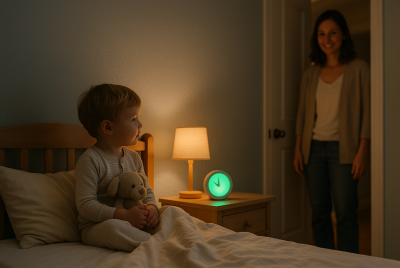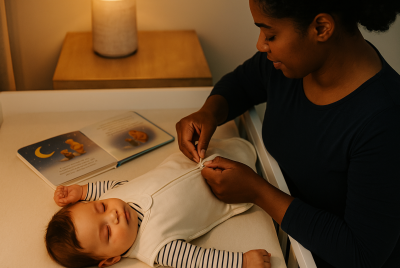Baby Teething: What Works and What Doesn’t?
We may earn a commission for purchases made using our links. Please see our disclosure to learn more.
Is your little one suddenly drooling, fussy, and gnawing on everything in sight? Welcome to the world of baby teething—a rite of passage that every family faces, often with a mix of anxiety and curiosity. If you’re searching for what actually helps soothe a teething baby (and what’s best avoided), you’re in the right place. This guide breaks down what works, what doesn’t, and offers science-backed advice so you can comfort your baby with confidence. Let’s demystify baby teething together.
When Does Baby Teething Start?
Most babies start teething sometime between 4 and 7 months, but it’s perfectly normal for the process to begin a bit sooner or later. The first teeth to emerge are typically the lower front ones, soon followed by their upper counterparts. By the time your child turns three, they’ll likely have all 20 baby teeth in place.
Genetics, nutrition, and even whether your baby was born early or late can influence when those first teeth pop through. If you’re ever in doubt, your pediatrician is a great resource.
Recognizing Baby Teething Symptoms
Teething isn’t always obvious—especially for new parents. The most common signs of baby teething include:
- Excessive drooling
- Chewing or gnawing on fingers and toys
- Irritability or fussiness
- Swollen, tender gums
- Slight increase in temperature (not over 100.4°F)
- Difficulty sleeping
- Rubbing cheeks or pulling ears
It’s important to remember: not every symptom is caused by teething. If your baby develops a high fever, persistent diarrhea, or a rash, reach out to your pediatrician for guidance.

What Actually Works for Baby Teething Relief?
Safe and Proven Remedies
While there’s no magic cure, most remedies aim to soothe your baby’s sore gums and offer comfort. Here’s what both experts and real-life parents find most effective:
1. Teething Rings and Toys
Choose solid rubber or food-grade silicone teethers. Place them in the fridge for a cooling effect (never the freezer—extreme cold can hurt tender gums). Avoid liquid- or gel-filled options that could leak.
2. Cold Washcloth
A clean, damp washcloth placed in the refrigerator can become your new best friend. Let your baby chew and suck for simple, safe relief.
3. Gentle Gum Massage
Wash your hands and softly rub your baby’s gums in slow circles. Direct pressure can work wonders for discomfort.
4. Distraction
Sometimes, a favorite toy, playful song, or extra cuddle time can help take your baby’s mind off sore gums.
5. Chilled Fruit (for older babies)
If your baby is eating solids, try offering a chilled banana or slice of cucumber. Always supervise closely to prevent choking.
What Pediatricians Recommend
Pediatricians generally recommend sticking with gentle pressure, cold objects, and simple comfort. Medication is rarely needed. If your baby is struggling, your pediatrician may suggest an appropriate dose of acetaminophen or ibuprofen—but never medicate without professional advice.
What Doesn’t Work (and Might Be Harmful)
Some remedies simply don’t work—or worse, can put your child at risk. Here’s what to skip:
Teething Gels and Tablets
Many over-the-counter teething gels contain benzocaine or lidocaine, which aren’t safe for babies and can lead to dangerous side effects. The FDA strongly warns against using these for children under two. Similarly, homeopathic teething tablets may contain unregulated ingredients and have been linked to health issues. It’s best to steer clear.
Old Wives’ Tales and Outdated Remedies
Rubbing whiskey or any alcohol on your baby’s gums isn’t just old-fashioned—it’s dangerous. Amber teething necklaces and bracelets are also unsafe due to the risk of choking and strangulation. If a remedy isn’t endorsed by pediatricians or regulated for safety, don’t use it.
At-Home Comfort Tips for Teething Babies
Beyond teethers and washcloths, these little steps can make a big difference:
- Keep extra bibs handy to manage drool and protect your baby’s skin.
- Offer plenty of hugs for reassurance and emotional comfort.
- Do your best to keep your baby’s daily routine consistent. A familiar schedule can be comforting during teething.
- Try gentle, relaxing activities like bath time or baby massage.
- Maintain good oral hygiene—even before teeth appear, wipe gums daily with a clean cloth.
- If teething disrupts your baby’s sleep, creating a soothing bedtime environment—like using a gentle, motion-based bassinet such as the MamaRoo Bassinet—can help your little one settle more easily.
What Science Says About Baby Teething Remedies
If you’ve ever wondered whether those popular teething tips are truly effective, you’re not alone. Parents everywhere want evidence, not just advice. Here are two highly regarded scientific studies that shed light on what really helps soothe a teething baby—and what’s best left on the shelf.
Systematic Review: Do Teething Remedies Actually Work?
A systematic review published in the Brazilian Oral Research Journal closely examined a range of teething remedies, from homeopathic tablets to over-the-counter gels and old-fashioned cold washcloths. The review found that non-pharmacological solutions like teething rings and gum massage were most effective at easing classic teething symptoms, such as drooling, swollen gums, and sleep issues. The researchers also noted that while some homeopathic options and gels were popular, there was little high-quality evidence to support their safety or effectiveness.
For parents, the takeaway is clear: When it comes to baby teething, simple, hands-on comfort measures are best. Read the full systematic review on the efficacy of treatments for baby teething symptoms.
Clinical Trial: Are Teething Rings and Gum Massage Proven to Help?
Another strong piece of evidence comes from a randomized clinical trial highlighted in the same review. Researchers evaluated how various remedies impacted babies’ teething discomfort. Teething rings and gentle gum massage emerged as clear winners, significantly reducing drooling, sleep disruptions, and gum irritation within just a few days. Importantly, these methods were also the safest—no concerning side effects were reported, and parents found them easy to use at home.
To see how non-pharmacological remedies stand up to the hype, dive into the details of this clinical trial comparing teething comfort solutions.
What’s the big takeaway? Science agrees—when in doubt, reach for a teething ring, a chilled washcloth, or your own gentle touch. Sometimes, the simplest solutions really are the best for your baby’s comfort and your peace of mind.
When to Call the Doctor About Teething
Most teething symptoms are mild and manageable at home. However, contact your pediatrician if:
- Your baby has a fever above 100.4°F
- Symptoms last more than a few days with no improvement
- There’s persistent diarrhea or vomiting
- You notice bleeding, pus, or severe gum swelling
Remember, teething should not make your baby very ill. When unsure, it’s best to reach out to your doctor for guidance.

Recommended Teething Products for Babies
If you’re feeling overwhelmed by choices, here are some top-rated, parent-approved baby teething products from Amazon:
1. Sophie La Girafe Teether
A natural rubber teether that’s easy for babies to grasp.
2. Nuby Ice Gel Teether Keys
Colorful, chillable, and perfect for sore gums.
3. Comotomo Silicone Baby Teether
Soft, safe, and designed for little hands.
4. Baby Banana Infant Toothbrush
Doubles as a teether and helps with early oral care.
5. Munchkin Fresh Food Feeder
Let your baby chew on chilled fruit for relief and fun—always with supervision.
Always supervise teething babies with toys, and follow all manufacturer safety instructions.
Conclusion: Every Baby is Different
Teething is a natural part of your child’s development, even if it’s sometimes tough on everyone involved. What helps one baby might not help another, so prioritize gentle, safe comfort measures and trust your own instincts as a parent. When in doubt, your pediatrician is there to help. Hang in there—the gummy grins and sleepless nights won’t last forever, and soon enough, you’ll see that adorable toothy smile.
Need more parenting tips? Bookmark this page and check back for new advice on all things baby care. Sharing with a friend or new parent? They’ll thank you for the honest, science-backed guidance.
FAQs About Baby Teething
Q1: How long does baby teething last?
Teething typically starts around 6 months and continues until about age three. Each new tooth may cause a few days of discomfort.
Q2: Can teething cause a fever?
A mild temperature is common, but a true fever (over 100.4°F) usually signals something else. Check with your doctor if your baby’s temperature climbs.
Q3: Are teething gels safe?
Pediatricians recommend avoiding teething gels and tablets, as they can pose health risks. Stick to gentle, non-drug remedies.
Q4: How can I soothe my baby at night during teething?
Try a cold teether before bedtime, keep your routine consistent, and offer extra comfort. If sleep is severely disrupted, consult your pediatrician.
Q5: When is the right time to begin brushing my baby’s teeth?
Begin by wiping your baby’s gums before teeth appear. As soon as your baby’s first tooth appears, start brushing with a soft baby toothbrush and a small dab of fluoride toothpaste.




